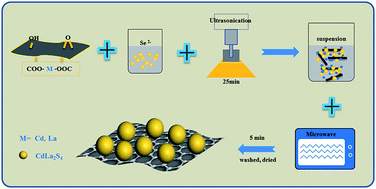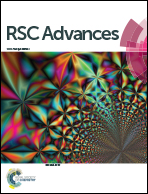Bubble template synthesis of CdLa2S4 hollow spheres/reduced graphene oxide nanocomposites as efficient and sustainable visible-light driven photocatalysts
Abstract
A hollow sphere CdLa2S4/reduced graphene oxide (rGO) composite was successfully synthesized for the first time via a simple microwave assisted hydrothermal approach using bubbles generated from the decomposition of NH3H2O and Na2S2O3 in a domestic microwave oven within several minutes. The large number of catalytic active sites together with the advantages of the hollow structure makes the as-synthesized CdLa2S4/rGO composite an efficient catalyst for the degradation of rhodamine B (RhB) and industrial dyes such as Texbrite BA-L (TBA) at high concentration in aqueous solutions. The oxidation reaction of 1,5-diphenyl carbazide (DPCI) by a generated reactive oxygen species (ROS) that has very strong oxidizing power could be attributed to the excellent photoinduced charge separation abilities and observed red shift in these hybrid semiconductor materials. Moreover, the synthesized catalyst can be easily recovered and reused for at least four cycles due to its good stability. The results confirm that as-synthesized CdLa2S4/rGO composites are promising potential candidates for high-performance visible light driven photocatalyst materials.


 Please wait while we load your content...
Please wait while we load your content...